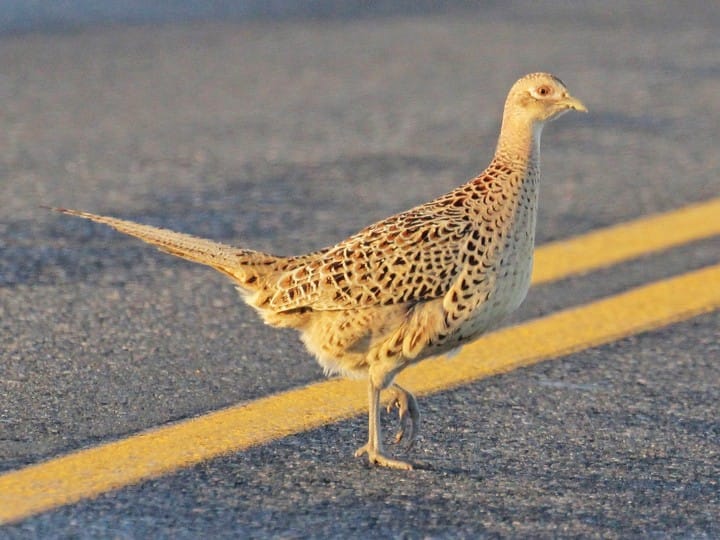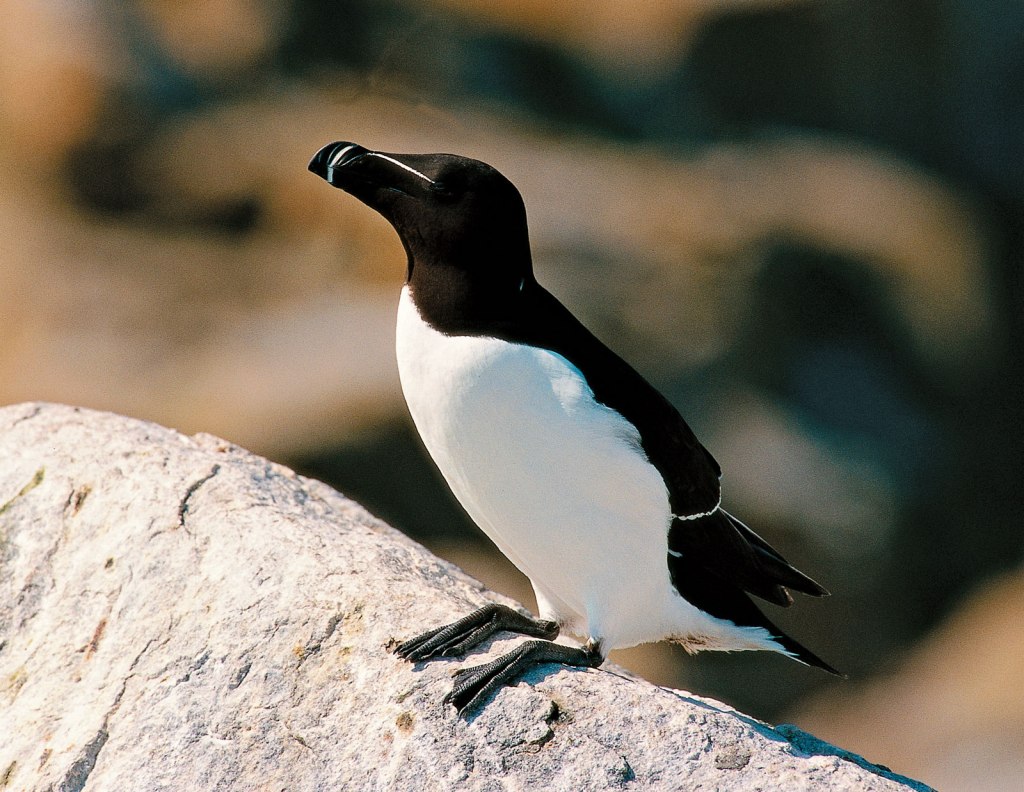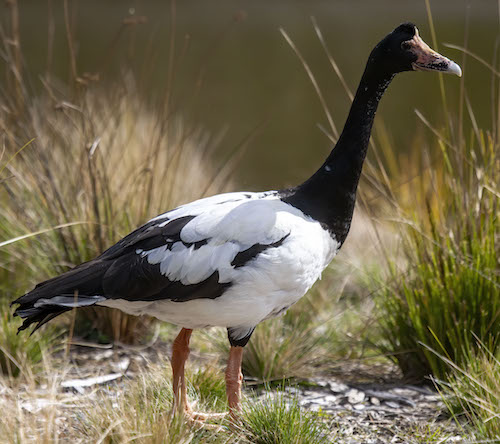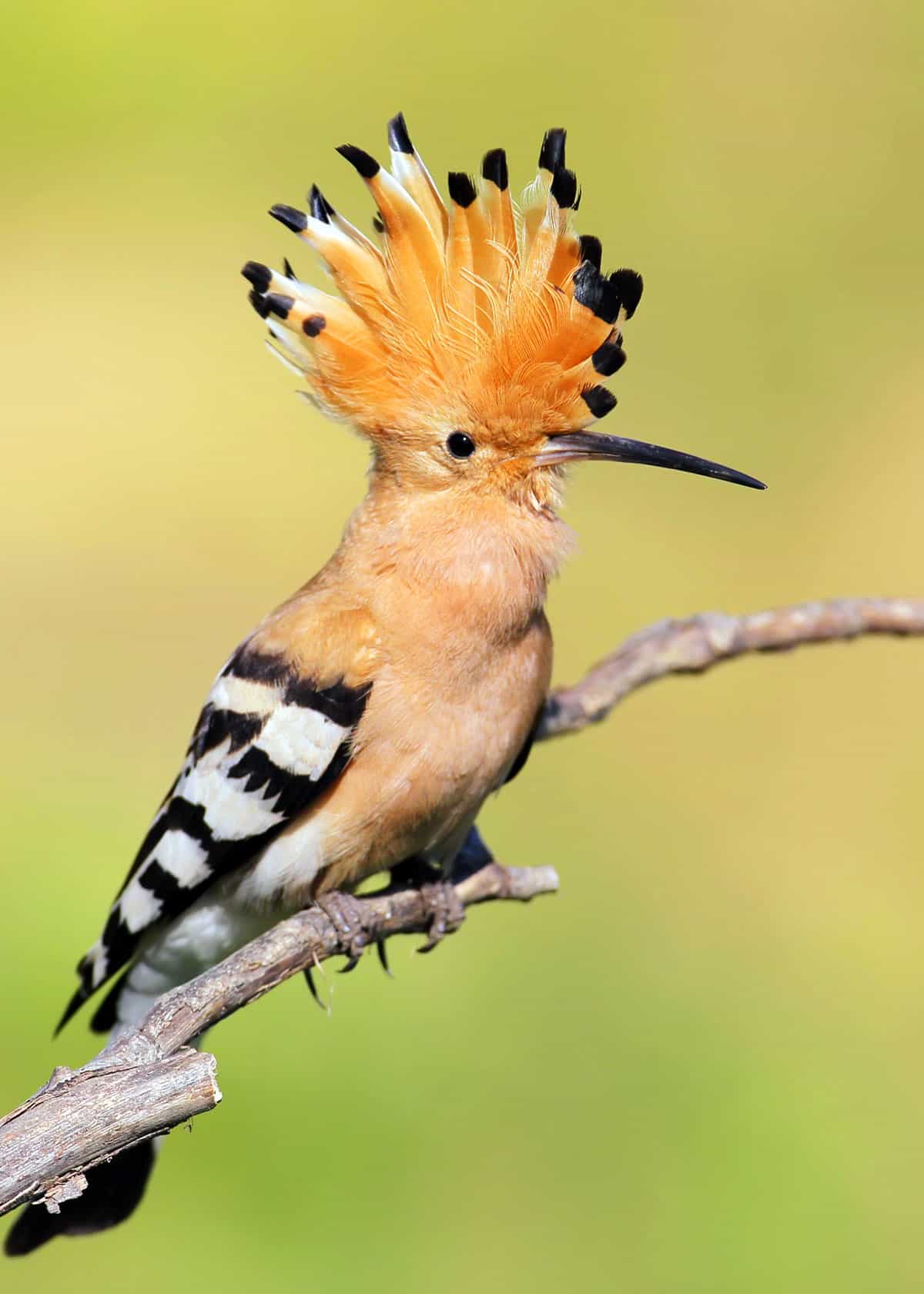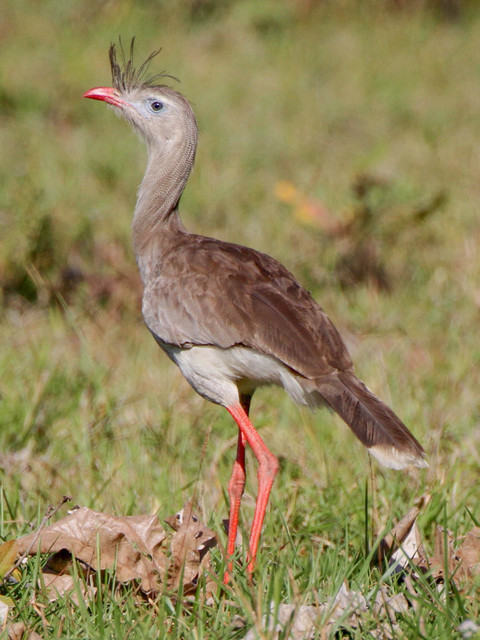
The seriemas are the sole living members of the small bird family Cariamidae, which is also the only surviving lineage of the order Cariamiformes. Once believed to be related to cranes, they have been placed near the falcons, parrots and passerines, as well as the extinct Phorusrhacidae. The seriemas are large, long-legged territorial birds that range from 70 to 90 cm. They live in grasslands, savanna, dry woodland and open forests of Brazil, Bolivia, Argentina, Paraguay and Uruguay. There are two species of seriemas, the red-legged seriema (Cariama cristata) and the black-legged seriema (Chunga burmeisteri). Names for these birds in the Tupian languages are variously spelled as siriema, sariama, and çariama, and mean “crested”.
